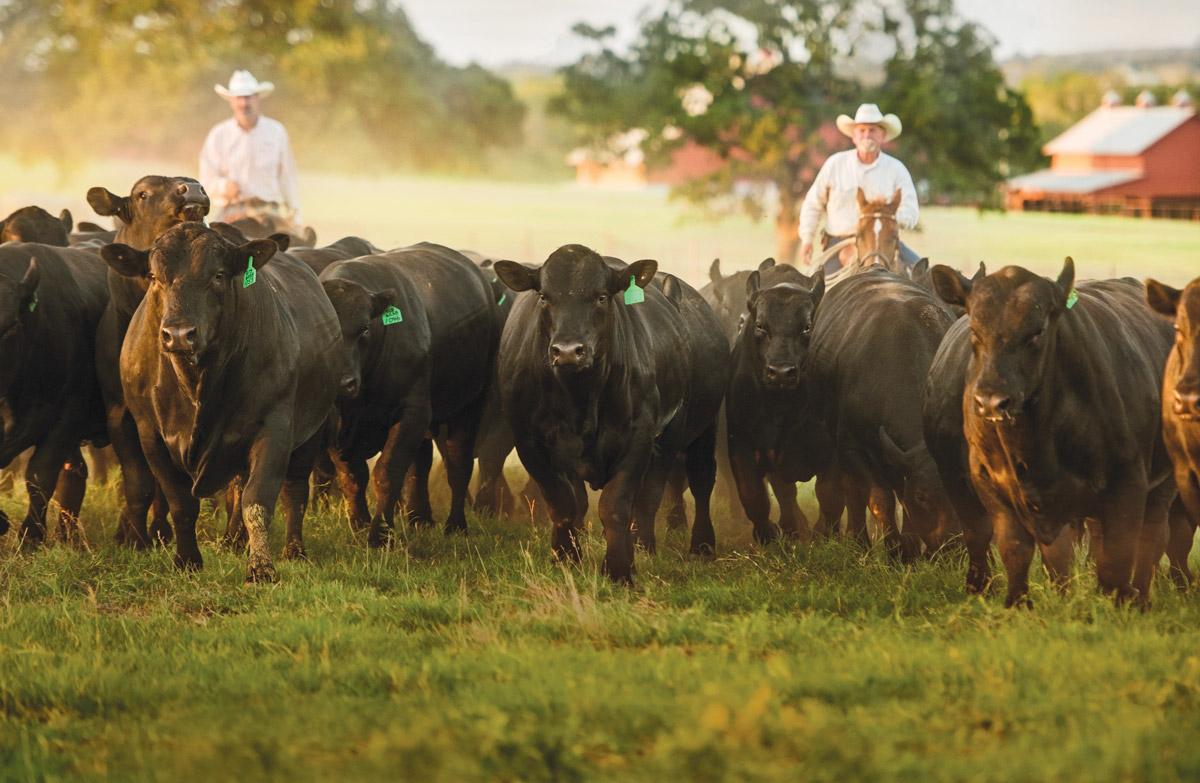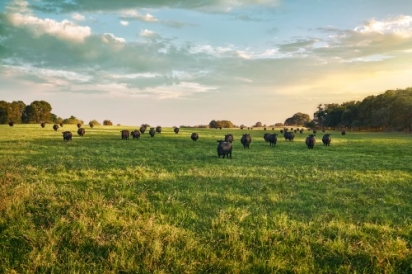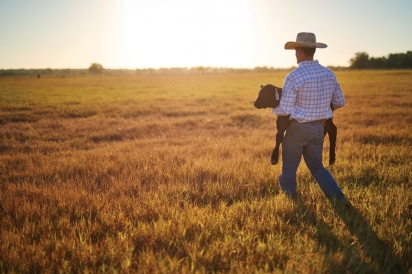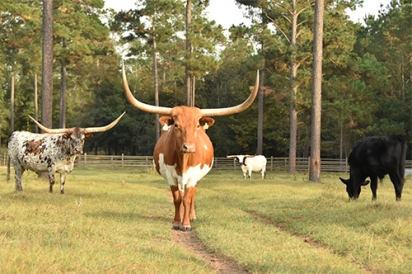Simply Bovine
To beef or not to beef: that is not the question
Americans love beef. Even with reported drops in total beef consumption over the last few years, we consumed some 55 pounds of beef per capita last year. But not all beef is created equal, and as consumers demand high-quality, responsibly raised beef, ranchers are stepping up to deliver.
How they do it can vary and ultimately how the beef that lands on your plate is raised can take different forms. It may come from a ranch that has found how to fulfill demand at a larger scale while maintaining transparency, high standards and sustainable methods. Or it may come from a small rancher who is helping to preserve a heritage cattle breed by selling its grass-fed beef at farmers markets.
At 44 Farms in Cameron, Texas, Bob McClaren has created a successful business by selling purebred Angus cattle with premium genetic traits. He took over the ranch, which was established by his great-grandparents in 1909, after a career in business and law. He was always drawn to agriculture but his father had told him one couldn’t make a living in it. This advice drove him to carve out a niche helping ranchers succeed.
In the beef business, ranchers typically produce calves, which are bought by feedlot operators. The feedlot operators sell them to the big packers and then they get sold to grocery stores around the country. In this cycle, the men and women who raise the cattle have very little control over their costs and what they get paid.
“Our whole idea was to take cattle production out of a commodity- based business where [the cattle are] all treated the same no matter how well they were taken care of, how well they were developed, and to try to create a premium for doing it the right way, for being a good steward of the livestock and the land, and also providing a really high-quality-grade beef,” said McClaren.
The USDA grades beef as Prime, Choice and Select based on the beef’s marbling. But only about 2% of beef is graded USDA Prime. 44 Farms aims to help raise beef that has a higher likelihood of grading Prime or Choice, which earns ranchers a premium. The farm’s breeding program matches bulls and females based on their genetics, and uses methods such as artificial insemination and embryo transfers to produce cattle that are docile, have a light birth weight but grow well, and have good marbling, among other traits. The animals also enjoy excellent care, are free of growth hormones and spend their days in large pastures.
Beef, the Right Way
In McClaren’s view, the natural development of the cattle paired with the marbling is what results in better-tasting beef. He would know. Five years ago, 44 Farms started selling its own brand of beef—44 Steaks—directly to consumers and restaurants across the country. “We really started [the beef program] to show people how good the breed was,” McClaren said.
Sales started online but soon chefs caught on and started serving it at their restaurants. Today you’ll find 44 Steaks beef at around 200 restaurants in the country, most of them in Texas, including over 40 restaurants in Houston, and the demand keeps growing.
To meet demand without sacrificing quality, McClaren created a calf buyback program. 44 Farms buys back calves bred with their genetics from ranchers and develops them for 44 Steaks. Ranchers who participate in the program must follow animal welfare and stewardship guidelines, including a commitment to never use hormones, antibiotics or feed additives. It’s a win-win that also allows ranchers to recover some of what they’ve invested into 44 Farms cattle.
Despite its growth, 44 Farms maintains a small-ranch feel. They have an open gate policy and place a high priority on customer relationships because people want to know who they’re buying from.
Preserving a Texas Icon
For Darlynn Lydick of Twin Creeks Ranch in Willis, Texas, knowing who you’re buying beef from is very important. Because much of the beef you buy at the grocery store doesn’t have a label of origin, she says, it’s hard to know how the animals were treated and raised.
Twin Creeks Ranch raises a breed not typically associated with beef: the iconic Texas Longhorn. Known for their large, curved horns, longhorns are raised for their hides and horns, as pasture art or to show, but the characteristics of their meat make it attractive to consumers looking for lean, grass-fed meat. The longhorn’s resistance to drought conditions and ability to thrive on minimal forage also make them appealing to people who raise them.
The first herd of longhorn cattle was driven from Mexico to what eventually became Texas in 1690, but the later arrival of European and Asian breeds nearly wiped out their existence. The Livestock Conservancy, an organization devoted to protecting heritage breeds, estimates that there were some 1,200 purebred longhorns in 2015. Slow Food included the Texas Longhorn in the Ark of Taste, a catalog of foods facing extinction, as a way to promote their consumption.
“Domesticated breeds were designed to be eaten and to be part of agriculture, and any farmer, unless they’re just in it for yard ornaments, needs a market for their product,” said Ryan Walker, a native Texan who works for The Livestock Conservancy. So if the demand for eating longhorn beef increases, ranchers have an incentive to breed more animals and in turn increase the total population.
Lydick didn’t set out to sell beef when she started her registered longhorn herd in 2011, but because she had to do with animals that she wasn’t going to rebreed (a steer that won’t become the best bull, for example), she and her family started eating their meat. Soon she was giving it to friends, who liked it, and 18 months ago she started selling grass-fed ground longhorn beef.
Longhorn beef is much leaner than what our palate is accustomed to but it’s lower in saturated fat, cholesterol and calories than other meat, including white meat. Because of its low fat content, it has to be cooked differently for better results and flavor, says Lydick. So she spends a lot of time educating her customers about how to cook the meat.
Last November, Lydick started selling her beef at the Meyerland Farmers Market and earlier this year she expanded beyond ground beef to other cuts in response to customer requests. She still raises cattle to show or breed but she has diversified her herd so its traits are now geared more toward beef production.
A small ranch like Lydick’s fills a niche raising a heritage breed and helping preserve it. A large ranch like 44 Farms raises a popular beef breed in a unique and sustainable way. In the end all ranchers who put in work and dedication to raise animals responsibly share the common goal of simply wanting to get high quality, sustainable beef on our plates. In doing so, they help us change the way we think about beef in our homes and the restaurants where we eat.









